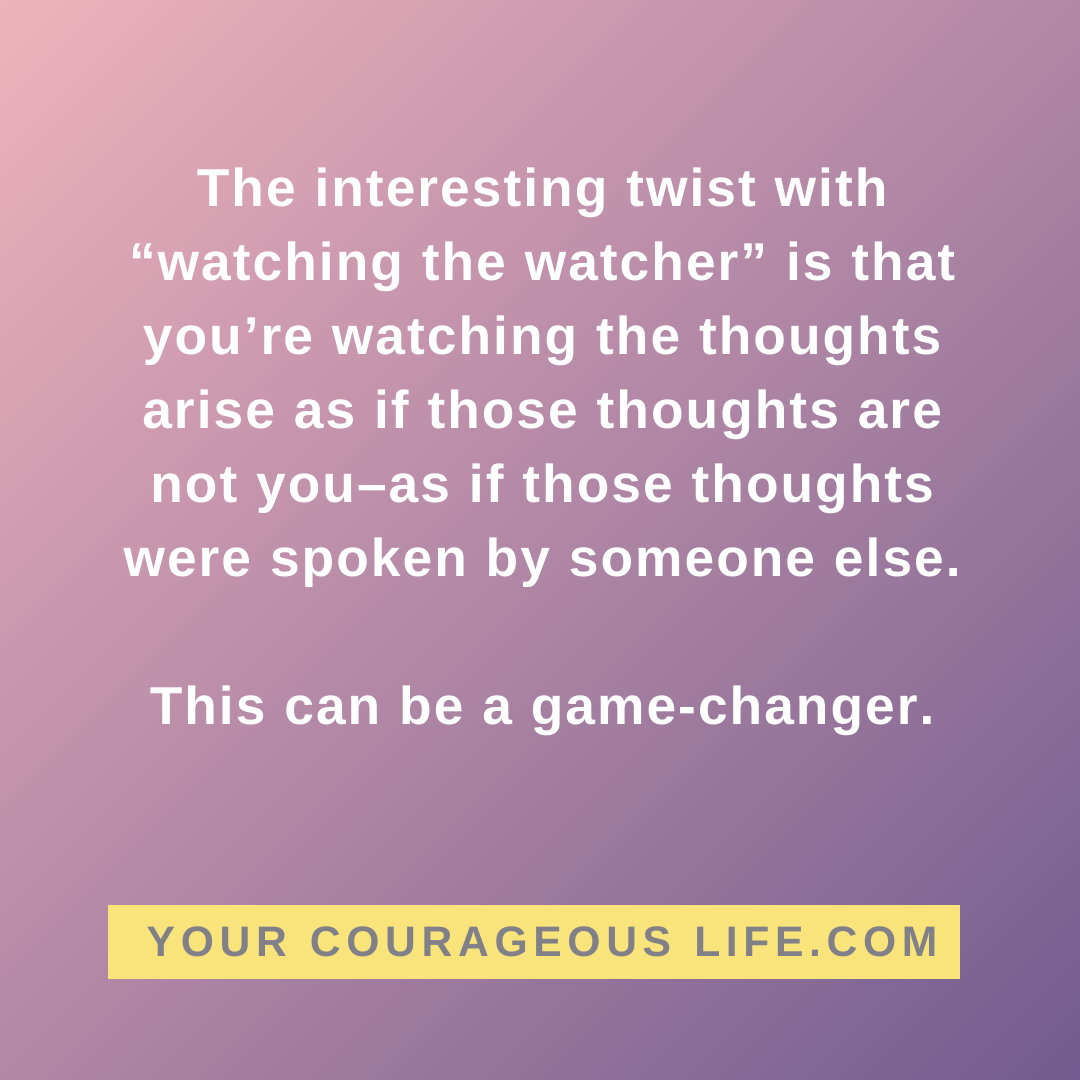Watching the watcher
“You have probably come across “mad” people in the street incessantly talking or muttering to themselves. Well, that’s not much different from what you and all other “normal” people do, except that you don’t do it out loud. The voice comments, speculates, judges, compares, complains, likes, dislikes, and so on. The voice isn’t necessarily relevant to the situation you find yourself in at the time; it may be reviving the recent or distant past or rehearsing or imagining possible future situations. Here it often imagines things going wrong and negative outcomes; this is called worry. Sometimes this soundtrack is accompanied by visual images or “mental movies.” — The Power of Now
Sound familiar?
I can recognize this aspect of myself. Planning, plotting, Ego, desires for control, manipulating to get what it wants without even being aware of its manipulation because desires are so justified…running on auto-pilot, devoid of conscious presence.
But there’s something we can do with all of that running around, incessantly thinking through these negative mental movies. We can start “watching the watcher.”
This idea of watching the watcher comes from the Buddhist tradition. In meditation, you watch your thoughts—not with your eyes, of course, but rather, you put your attention on them without doing anything. Without judging thoughts as good or bad, you label them simply this: “thinking.” That’s it. You do that over and over again as you sit on the cushion, because that’s how you bring presence to them, and that’s how you get out of the habit of automatically having a knee-jerk reaction to everything in your life.
It’s thought that this constant knee-jerk reaction, the rumination, is actually what causes the most suffering.
The interesting twist with “watching the watcher” is that you’re watching the thoughts arise as if those thoughts are not you–as if those thoughts were spoken by someone else.
This can be a game-changer.
Changing the Questions
One of the reasons watching the watcher is so helpful is that it takes us out of the construct of “right-wrong” with our thinking, and into understanding, Suddenly, the question is not, “How can I stop thinking thoughts that are wrong/destructive?” and instead the question becomes about understanding: “What part of me is thinking this?”
Is it the “you” that you were at seven, ten, thirteen, eighteen years old that is thinking this thought? Is it the “you” that you were right after a traumatic event that is thinking this thought? Or the “you” that you were right after a significant accomplishment?
Then, the question can shift to: “But that part of me is no longer here–so who is saying this?”
And suddenly, an emptiness can resound. Your mind sits, still, waiting for “what’s next.” For most people, a new thought will very quickly arise and off they’ll go, tossed off into thinking about that new thought and what it must mean.
But then you come back to the breath. You ask yourself: “Who’s saying this?”
The emptiness comes back as you watch to see what this voice will say, next.
Unobserved, it is loud and insistent that the world is a certain way, and that you must react to it. But observed, it is curiously quiet.
Back and forth, back and forth.
When you’ve practiced this for awhile, there are gaps between the times of wild, incessant thinking and jumping around from one thought to another. The gaps are where we find more peace. The gaps are the places where we realize that we have a choice: where we want to place our intentions, where we want to focus our attention, and whether we want to react or want to respond.
This isn’t a fast fix. It isn’t an immediate result.
But collectively, those little gaps will be like little victories, inches of freedom gained, and every inch will be worth it.

